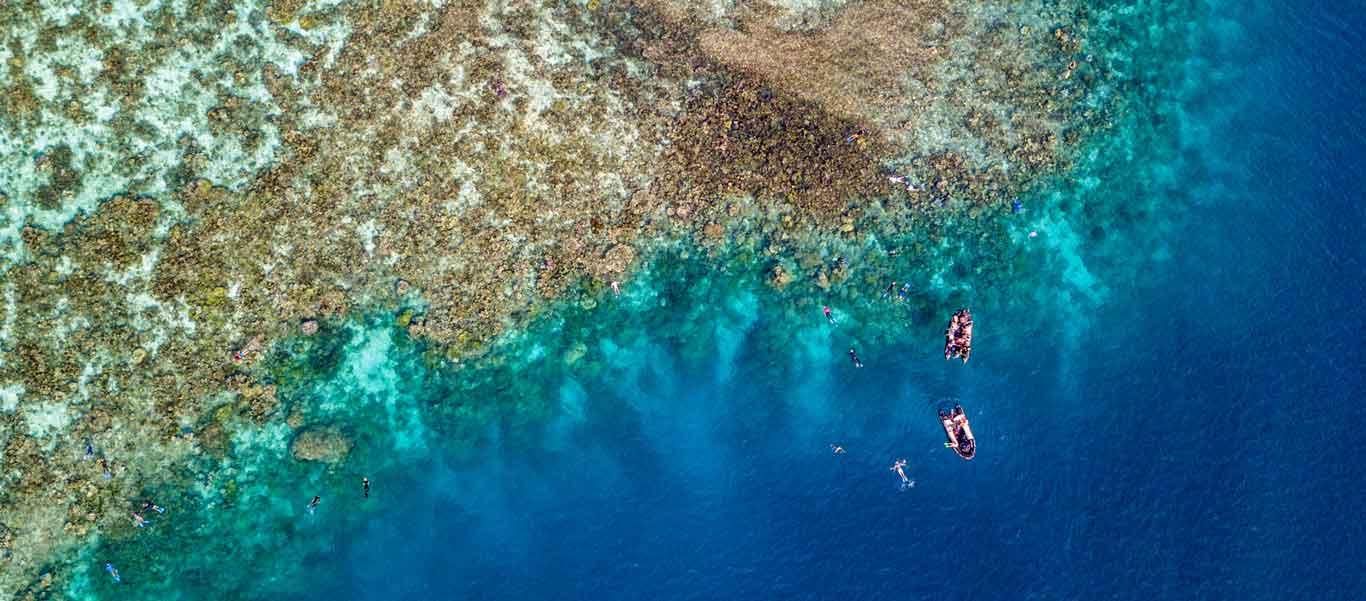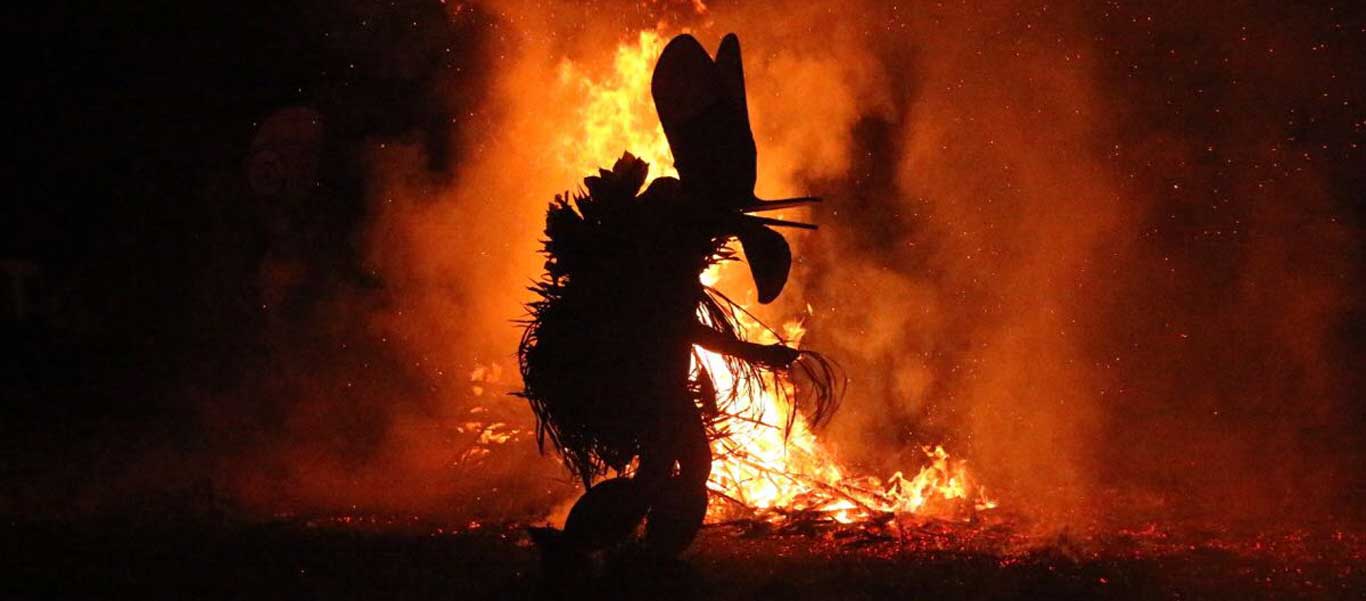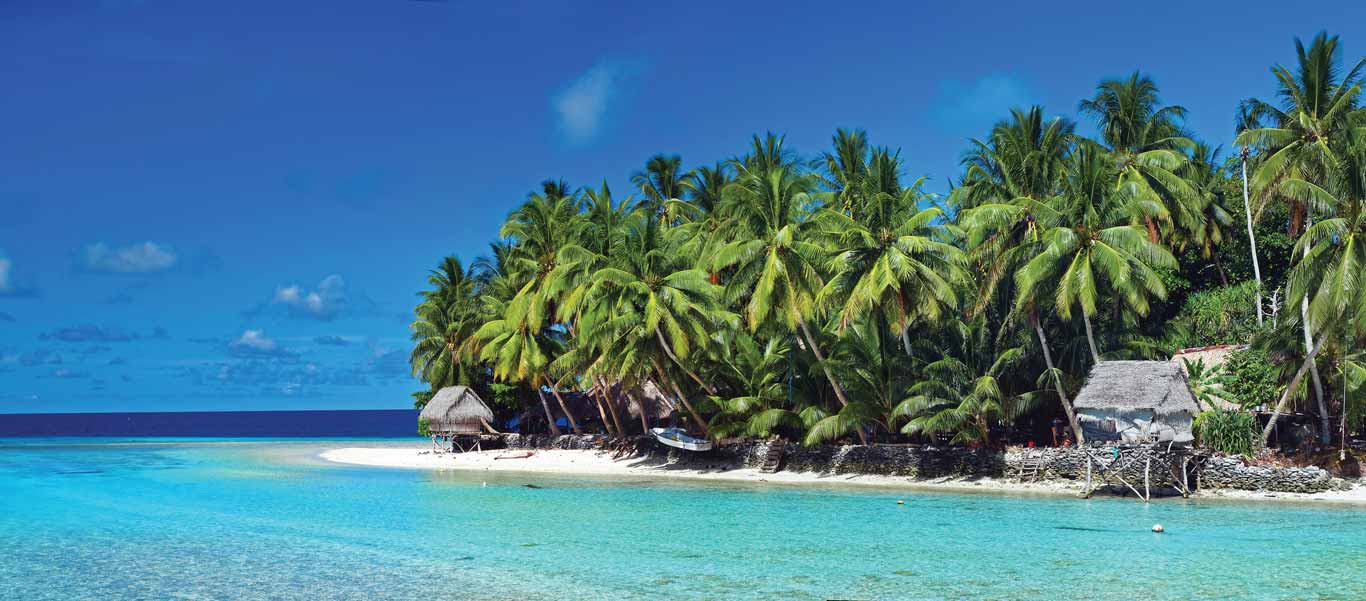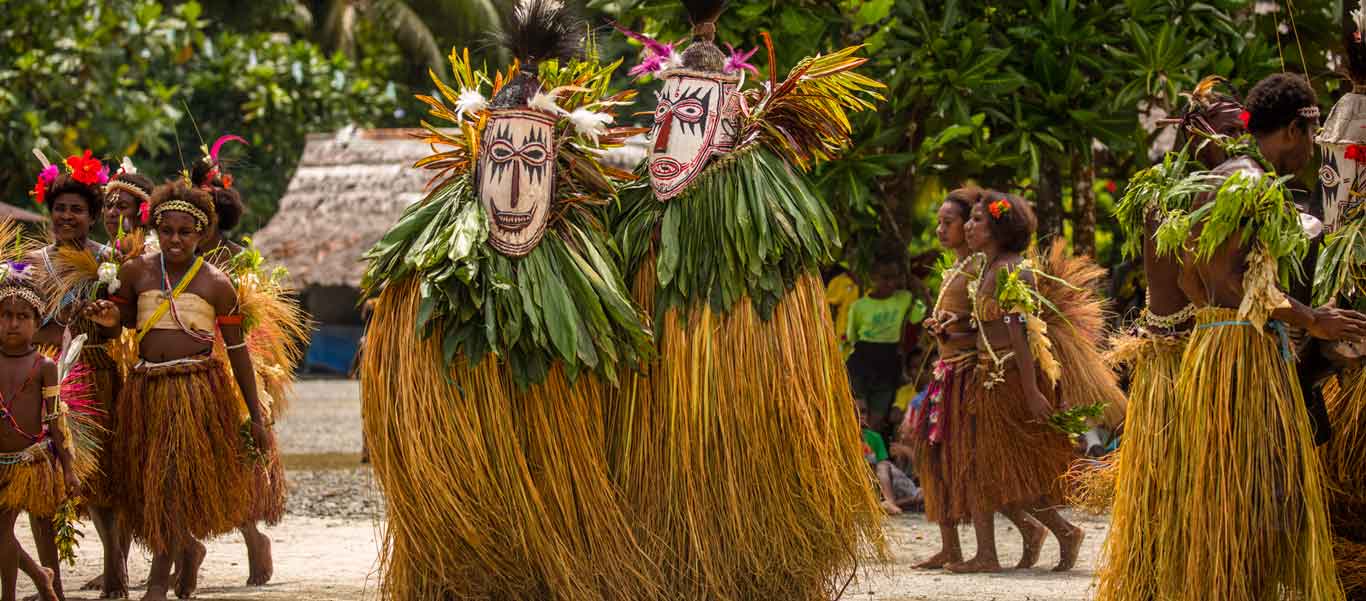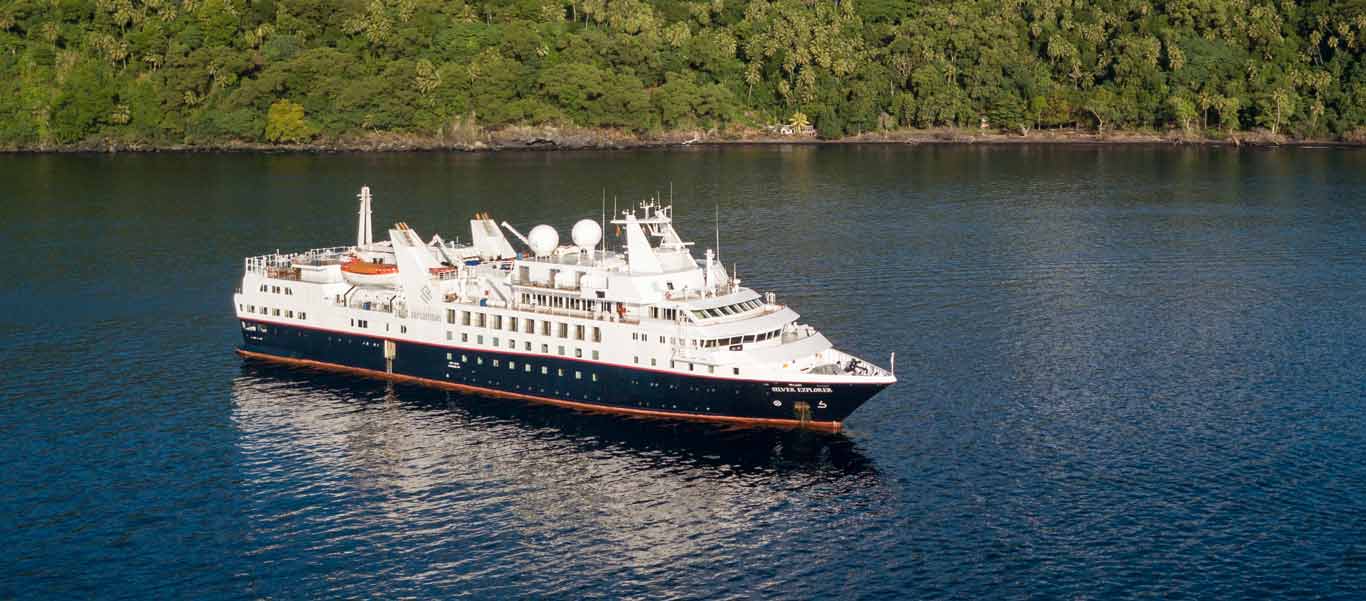Micronesia & Papua New Guinea
onboard Silver Explorer
Micronesia and Papua New Guinea Cruise
This is the raison d’être of expedition travel—some of the world’s most remote spots, marvelously unique in ecology and culture, separated by wide seas and intricate reef systems. This 22-day Micronesia and Papua New Guinea cruise is possible only via small ship, engineered to navigate difficult shorelines and take you where Edenic delights await every traveler: snorkelers will see some of the best coral reefs on Earth; birders can find endemic species like Micronesian Starlings and Pohnpei Lorikeets; history buffs can see remnants of the islands’ complex colonial past, as well as ever-present reminders of their pivotal positioning in WWII. Lovers of culture and nature alike will be blown away by the sing-sings presented by these staggeringly diverse communities. Let Apex and the Silver Explorer take you where few travelers can reach, to experience the vibrant landscapes and cultures of these many storied islands.
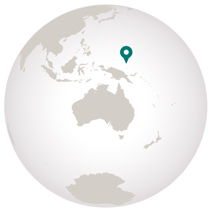
Destinations
- Travel by Air
- Travel by Road
- Travel by Boat
- Travel by Bullet Train
- Travel by Rail
- Travel by Dog Sled
- Day 1
- Day 2
- Day 3
- Day 4
- Day 5
- Day 6
- Day 7
- Day 8
- Day 9
- Day 10
- Day 11
- Day 12
- Day 13
- Day 14
- Day 15
- Day 16
- Day 17
- Day 18
- Day 19
- Day 20
- Day 21
- Day 22
-
Thursday, April 8: Arrive Guam, USA
Touch down on this 30-mile-long speck of a Pacific island this evening, and transfer to your hotel. Overnight at Westin Resort Guam.
-
Friday, April 9: Guam / Embark Silver Explorer
This morning, join your fellow travelers and Apex expedition team for breakfast and a briefing. Take in the sights of Guam and soak up its welcoming spirit en route to Apra Harbor. Embark the Silver Explorer, your home away from home for the next 19 nights, in time for lunch. Settle into your cabin and be sure to be on deck as you depart the harbor and head south toward the Caroline Islands.
-
Saturday, April 10: Gaferut, Yap, Federated States of Micronesia
Among the State of Yap’s outer islands is the tiny, uninhabited Gaferut, an important site for bird and turtle nesting. Walk along its shores looking for various species of boobies, noddies and terns. Hike through thickets of taro plants to make an offering to the island’s mythical chief, a massive female Coconut Crab, revered by all Yapese visitors to Gaferut.
-
Sunday, April 11: Lamotrek Island
The total land area of Lamotrek is less than half a square mile, and its population tops out at 375. Visitors here will be greeted with a demonstration of local cultural traditions, such as loom weaving, mat and basket weaving from palm leaves, rope making, and canoe rigging. The village is located on the lagoon side of Lamotrek Island and boasts almost as many canoe houses as traditional homes. The lagoon offers snorkeling to see giant clams, octopi, Pennant Butterflyfish, anemone fish, and more. If it’s not out on a voyage, the Queen Veronica, the biggest outrigger canoe in the Federated States of Micronesia, will be in the lagoon.
-
Monday, April 12: Satawal Island
This tiny remote coral island is known for its early canoes and traditional seafaring techniques. Often called “The Island of Navigators,” it is revered as a mecca for Wayfinding, a sacred cultural practice that allows mariners to navigate the open ocean using only the stars, clouds, waves and other signs of nature. Walk through the village and be greeted by some of the roughly 500 inhabitants of this magnificent breadfruit tree-laden island. Peruse the island’s art, from abstract designs to traditional animal wood carvings. If you’re lucky, you may even be invited for a canoe ride with the locals.
-
Tuesday, April 13: Pulap Atoll
Meet the local chief and receive his permission to explore the atoll’s three islands—Pollap, Tamatam and Fanadik—for a unique look into daily life in this remote spot. Cruise the lagoon’s crystalline waters in a canoe made of breadfruit wood, or an older canoe hand-sewn with sennit. Snorkel in the protected, shallow waters, or beachcomb. To finish the day off right, join the cheerful locals in a “love dance.”
-
Wednesday, April 14: Chuuk
The massive, coral-fringed Chuuk Lagoon is considered one of the top 10 snorkeling sites in the world. Aside from the abundant colorful blennies, butterflyfish, and myriad other species, the lagoon holds the wreckage of a sunken Japanese battleship which includes the remains of fighter aircraft. Onshore, WWII enthusiasts will find a multitude of sites of interest, including colonial Japanese memorials, naval command and communications centers, and the surviving ruins of the Japanese colonial hospital. Birders will have plenty to do, looking for endemics such as Micronesian Scrubfowl, Palau Ground-Dove, Mariana Crow, Nightingale Reed-Warbler, Truk, Olive and Long-billed White-eyes, and the Chuuk Monarch.
-
Thursday, April 15: Oroluk Island
Watch for Spinner Dolphins on the approach to Oroluk Island. Tide permitting (landing is only possible at very high tides), wade ashore to meet the whole population of the islet—one small family. Take a stroll along the beach looking for nesting seabirds such as Micronesian Starlings and White-tailed Tropicbirds, as well as Hawksbill and Pacific Green Sea Turtle nests. Whether or not a landing is possible, you may still take the morning to swim or snorkel in the area to see rays, sea stars aplenty, snapper and Coral Trout. Return to the ship in the afternoon.
-
Friday, April 16: Pohnpei Island
Pohnpei is the largest island in the Eastern Caroline Archipelago, and the national capital of the Federated States of Micronesia. Unlike other Micronesian islands, volcanic Pohnpei boasts tropical jungles, mist-covered mountains, mangrove swamps and waterfalls. Pohnpei has seen many incarnations of colonial rule, from Spanish to German to Japanese. Fortunately, it escaped the worst of the destruction during WWII, and its capital city, Kolonia, is a living catalogue of the island’s complicated colonial history. Visit Nan Madol, Micronesia’s own Angkor Wat and the only ancient city built on a coral reef. This mysterious basalt city was built on 100 man-made islets and was used as a place of residence for priests and kings. Birders should watch for the endemic Pohnpei Fantail and Pohnpei Flycatcher.
-
Saturday, April 17: At Sea
Enjoy a day on the sea, looking for sea birds, dolphins, and whales as you head southwest toward Micronesia’s southernmost outposts. Attend lectures on the upcoming flora and fauna, the early history of European exploration in the area, and the fascinating anthropological work done in the region.
-
Sunday, April 18: Nukuoro Islet
Nukuoro is one of the most stunning islets in Micronesia, with lush vegetation and gardens of taro, bananas and breadfruit. Wander the island and see how these crops are grown, and how copra is prepared. There is a sparkling lagoon for snorkelers, who can see Hawksbill Turtles, large schools of barracuda and moray eels.
-
Monday, April 19: Kapingamaringi Atoll
Today, explore Micronesia’s southernmost atoll, comprised of thirty-three wooded islets surrounding a five-mile-wide lagoon. Four of Kapingamaringi’s islets are inhabited, and you have the chance to visit with some of the locals and learn about their way of life. The islanders are renowned for their woodcarving skills, as well as their taro and coconut cultivating. This afternoon, snorkel through the lagoon’s stunning coral gardens and see lionfish, pipefish, and eels.
-
Tuesday, April 20: At Sea
Attend lectures on a variety of topics about Papua New Guinea and New Britain, a large, mountainous island off mainland Papua New Guinea.
-
Wednesday, April 21: Rabaul, Papua New Guinea
This morning, the ship will enter Blanche Bay on New Britain’s east coast and pass the impressive Tavurvur Volcano, one of six cone-shaped volcanoes that ring Rabaul’s flooded-caldera harbor. See the bubbling hot springs and take in magnificent views from Observatory Ridge. Visit parts of old Rabaul, which were covered by ash from the eruption of Mt. Tavurvur in 1994. Learn about the island’s WWII history at the small museum, which also has exhibits relating to Rabaul’s past as a German, Australian and, finally, Japanese colony, before Papua New Guinea gained independence in 1975.This evening, witness the Baining Fire Dancers, a highlight ofany visit to Rabaul: male dancers in large, elaborate masks that depict animal and bushspirits circle a giant bonfire in a ritual that builds to a crescendo through the night.
-
Thursday, April 22: Jacquinot Bay
Come ashore on Warakalap, or “Waterfall Beach,” a brilliant white coral beach in Jacquinot Bay, on the eastern coast of New Britain, punctuated by a waterfall that flows into a stream within view of the bright blue sea. Be greeted with a traditional sing-singas you land, followed by a dip in the refreshing water of the falls. Optional hikes will take you into the jungle, or farther into the hills. The area was an important base for the Australian Army after they liberated it in 1944.
-
Friday, April 23: Tami Island
The Tami Islands are a small palm, laurel and frangipani-dotted archipelago belonging to Papua New Guinea’s Morobe Province. Tami Islanders are known for their elaborately carved, oblong-shaped wooden bowls, cult figure carvings, and ornate ceremonial masks, some of which will be on offer as souvenirs. The small community of islanders live simply, and Kala Village has just a single primary school and small medical aid post. The sing-singhere is loud and punctuated by the beating of kundus, hand-held wooden drums with monitor lizard skin at one end. The beaches and reefs also have much to offer snorkelers, including large schools of bright surgeonfish.
-
Saturday, April 24: Tufi
Tufi, on the southeastern peninsula of Cape Nelson in Papua New Guinea’s Oro Province, is situated on a tropical “fjord” and surrounded by uncharted coral reefs. Take Zodiacs into the smooth waters of the Kwapurina Fjord and transfer to local wooden dugout canoes. With local villagers as your oarsmen, float under canopies of ancient mangrove forests, home to Tufi’s wide range of colorful birds and butterflies. Return to the entrance of the fjord and Kafure Village, where the villagers will welcome you with traditional dance and song. Tufi natives are known to wear tapa cloth, made from the bark of mulberry trees from the local forest. There will be an opportunity to observe the making of tapa before a leisurely afternoon on one of the local beaches to swim and snorkel.
-
Sunday, April 25: Fergusson & Dobu Islands
Fergusson is one of the most mountainous of the D’Entrecasteaux Islands in Milne Bay Province and is famous for its Dei Dei geysers—natural hot springs that periodically “erupt” with vapor steam. Walk with villagers to the springs and hear ancestral tales of the power contained within them. Birders should look for Sulphur-crested Cockatoos, Eclectus Parrots, and the resplendent Curl-crested Manucode. If you prefer, stay in the village and visit the Budoya Catholic Mission Station, one of the oldest churches in southern Papua New Guinea. This afternoon, visit smaller Dobu Island, believed for centuries to be a hub of black magic. Snorkelers will see bountiful coral gardens and a large diversity of butterflyfish, echinoderms such as the blue Linckia Sea Star, and sea cucumbers. Dobu is part of the famous Kula Ring, a ceremonial inter-island exchange system. Participants in the ring pride themselves on their armbands and necklaces, which are still exchanged to this day.
-
Monday, April 26: Samarai Island
Samarai, on the south-eastern tip of Papua New Guinea, was once a bustling trading port. In fact, this tiny island was once the second largest city in the Territory of Papua. The town, now in ruins, once held attractive colonial buildings, churches, schools, and even a movie house. At the onset of the War in the Pacific (1941 to 1945), Samarai was evacuated and many of the buildings were purposely destroyed to prevent Japanese occupation. In 2006, it was declared a National Historical Heritage Island, and there are hopes that some of the buildings may be restored. Coming into the jetty by Zodiac might be slightly surreal—it’s one of the most modernized communities you’ll encounter on this voyage, and quite densely populated compared to the surrounding islands.
-
Tuesday, April 27: At Sea
Spend a leisurely day crossing the Coral Sea. Stroll the decks looking for dolphins and other cetaceans and join the expedition team to recap the journey as you sail toward Australia.
-
Wednesday, April 28: Cairns, Australia
Be on deck early this morning for your arrival in Cairns, Australia, where rainforest meets modern city and then gives way to the underwater wonderland of the Great Barrier Reef. Enjoy a final breakfast before disembarking the Silver Explorer. Spend the day exploring the Daintree Rainforest, then enjoy a farewell dinner and overnight at the Shangri-La Hotel.
-
Thursday, April 29: Depart Cairns
Transfer to the airport for your early morning flight home

